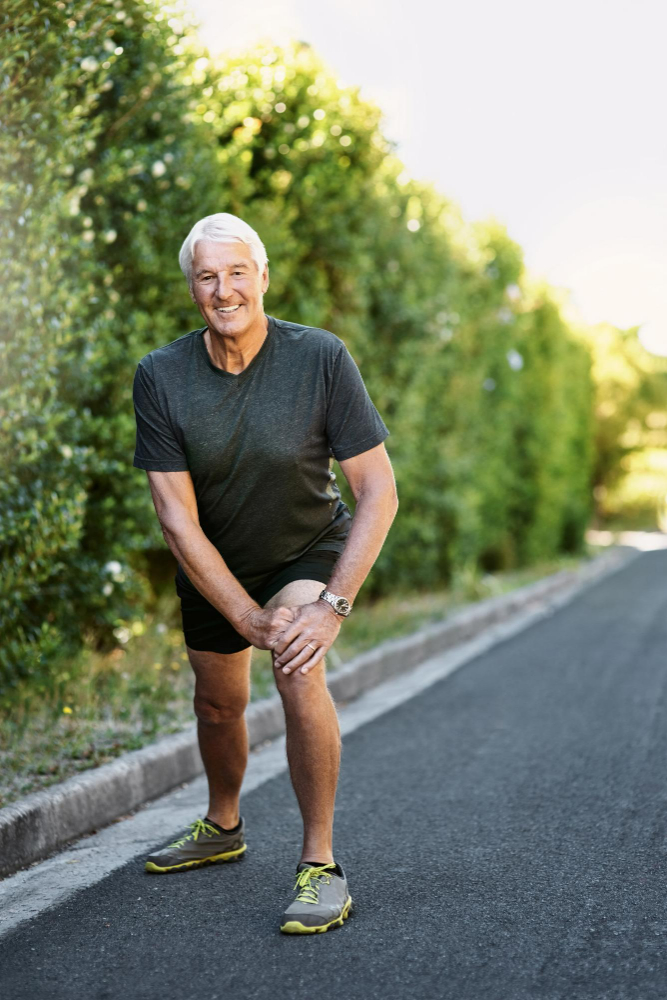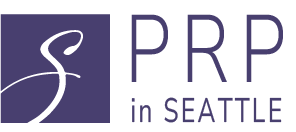Swelling. Stiffness. That sharp ache when you stand up. If knee pain is holding you back, PRP therapy offers a drug-free, surgery-free solution to heal from within. Using concentrated growth factors from your own blood, PRP stimulates repair in damaged joints and restores mobility—No surgery. No harsh meds. Just your body, healing itself.
At PRP In Seattle, our board-certified specialists use real-time ultrasound to guide a high-concentration PRP dose precisely into the damaged structures of your knee, converting your growth factors into a targeted repair plan.
What Is PRP & Why the Knee?
Platelet-rich plasma is a specially concentrated fraction of your blood that contains 3-to-10× more platelets than whole blood. These platelets release hundreds of growth factors, including PDGF, TGF-β, IGF-1, and VEGF, which can modulate inflammation and stimulate cells in cartilage, tendons, and ligaments. [1]
Because osteoarthritis and overuse injuries degrade cartilage and irritate the soft tissues around the knee, infusing these bio-signals directly into the joint provides the body with fresh tools to rebuild, rather than simply masking pain.
Conditions PRP Knee Injections Can Address
From everyday wear-and-tear to sports injuries, PRP knee injections may help with a wide range of knee problems:
- Early- to moderate-stage osteoarthritis. [2]
- Runner’s knee (patellofemoral pain) [3]
- Chronic patellar or quadriceps tendinopathy [4]
- Meniscus tears and post-meniscectomy soreness [5]
- Post-surgical healing or lingering swelling [6]


How PRP Works Inside the Joint
A small sample of your blood is spun in a high-speed centrifuge, isolating platelet-rich plasma. Once injected under real-time ultrasound guidance, PRP:
- Downregulates inflammatory cytokines that drive pain.
- Recruits and nourishes reparative cells (mesenchymal stem cells, chondrocytes).
- Stimulates collagen and proteoglycan synthesis, thickening cartilage and strengthening ligaments.
- Improves joint lubrication by enhancing synovial fluid quality.
Most patients initially notice a reduction in swelling, followed by steady improvements in comfort and mobility over several weeks.
PRP vs. Steroids & Surgery
Steroid shots can numb knee pain for only a few weeks and, with repeated use, may thin cartilage. Arthroscopic “clean-outs” or more invasive surgeries often demand months of rehab and come with higher risks. PRP offers a biologic middle ground that repairs rather than just removes or masks damage.
- Builds Tissue Instead of Thinning it – Platelet growth factors spur collagen and cartilage synthesis rather than simply blocking inflammation for the price of thinning the valuable cartilage.
- Minimal Downtime – Most patients walk out of the office and resume desk work the same day.
- Safe to Repeat – PRP can be refreshed every couple of weeks.
- May Postpone or Prevent Surgery – By improving joint mechanics and slowing degeneration, many patients delay or avoid arthroplasty. [7]
- Works Hand-in-Hand with Physical Therapy – Rehabilitation exercises amplify the regenerative response rather than competing with it.
Studies show PRP provides longer-lasting pain and function gains than corticosteroid injections, and head-to-head trials report outcomes equal to or better than arthroscopic debridement for knee osteoarthritis.[8]
Are You a Candidate?
If knee pain limits work, sports, or sleep and imaging still shows some cartilage left, PRP is worth exploring. Good candidates typically:
- Have mild-to-moderate osteoarthritis or soft-tissue injury
- Maintain a healthy weight or are actively reducing load
- Can pause NSAIDs 5–7 days pre-injection
- Do not have active infection, uncontrolled diabetes, or bleeding disorders
A personalized exam and X-ray/MRI review confirm suitability.
Interested in the Nano Fat Transfer For The Under-Eyes?
Fill out the form below to schedule your free consultation or ask any questions you may have.
PRP Knee Injection Cost in Seattle
PRP injections for Knee in Seattle start at $600 each. Package pricing is available for multi-session protocols, and you can spread payments over time with CareCredit®, Alphaeon®, or our 0 % in-house plans, making regenerative relief accessible without financial strain.
Book your PRP Knee Consultation with Us
Don’t let every step remind you of knee pain. Call (206) 279-2112 or click here to find out if PRP knee injections can get you back to hikes, runs, and carefree living—without surgery.
FAQs
How many PRP injections are needed for the knee?
Most people start with one injection and are re-evaluated at 4–6 weeks; mild cases often need only that single dose, while moderate arthritis may benefit from a series of two or three spaced a month apart.
How long do PRP injections last in the knee?
Pain relief and functional improvement typically last 6–12 months, and some patients report benefits extending to 18 months when combined with physical therapy and weight management.
How often can you get PRP injections in your knee?
Because PRP is autologous (from your own blood), it’s safe to repeat every 4-6 weeks or whenever symptoms begin to return, without the cartilage-thinning risks seen with frequent steroid shots.
Does Medicare cover PRP injections in the knee?
At present, Medicare classifies PRP for knee osteoarthritis as investigational, so it is usually not covered unless administered within an approved clinical trial; most patients pay out-of-pocket or use financing.
Do PRP injections hurt in the knee?
Expect brief pressure or a mild sting during the injection—numbed by local anesthetic—followed by bruise-like soreness for a day or two, which ice and Tylenol usually manage well.
References:
[1]https://pmc.ncbi.nlm.nih.gov/articles/PMC9465610
[2] https://pubmed.ncbi.nlm.nih.gov/38420745/
[3]https://columbiapain.org/platelet-rich-plasma-in-the-management-of-patellofemoral-pain-syndrome-a-clinical-perspective
[4] https://pubmed.ncbi.nlm.nih.gov/35509070/
[5] https://pmc.ncbi.nlm.nih.gov/articles/PMC10960087
STILL HAVE QUESTIONS?
Give us a call at (206) 279-2112. Chat by clicking the icon in the lower left hand corner of your screen. Otherwise, contact us by filling out the form above.
